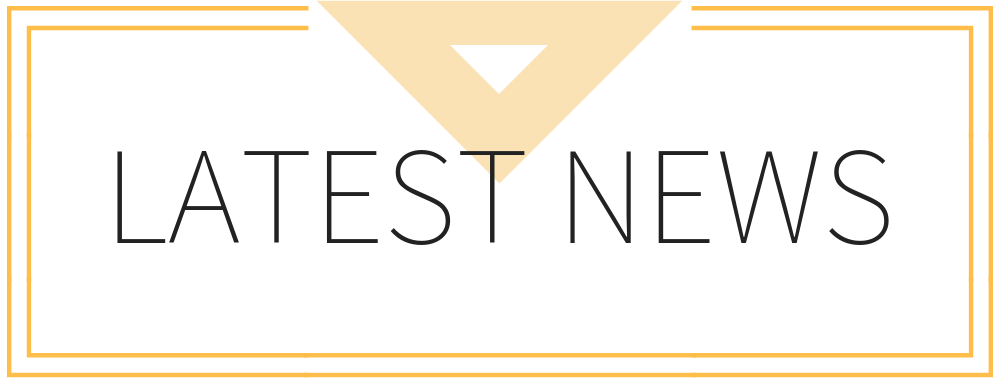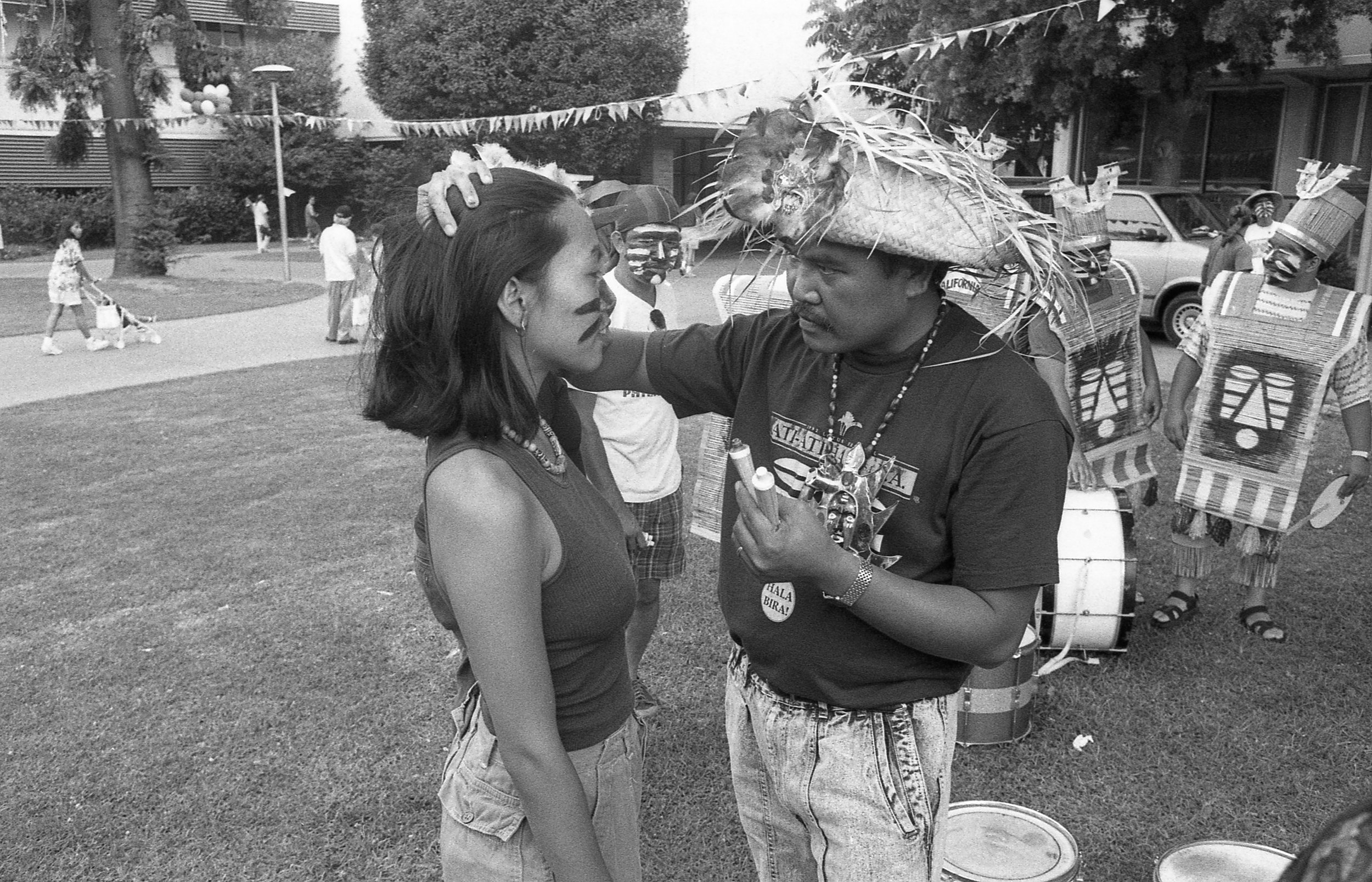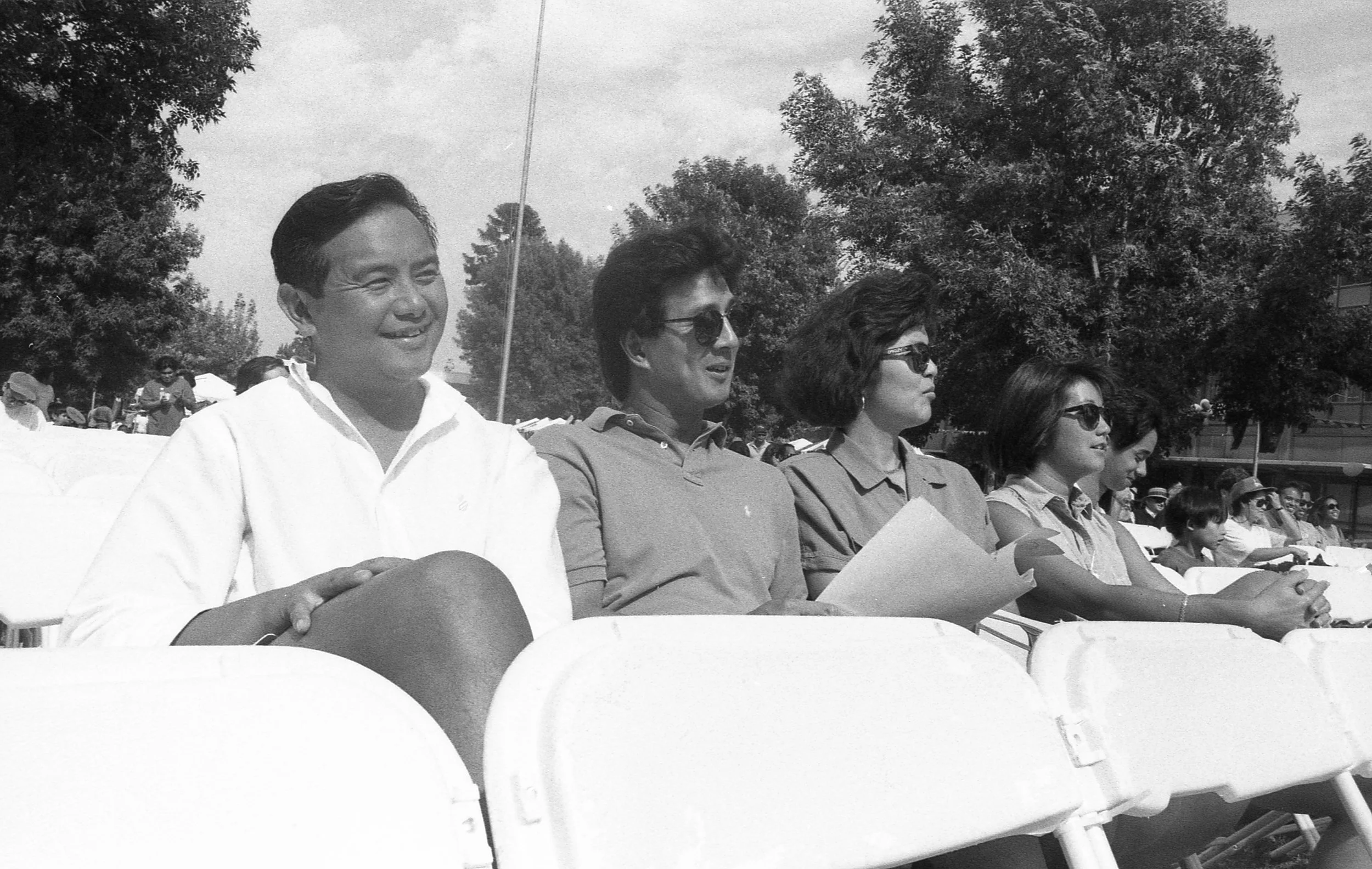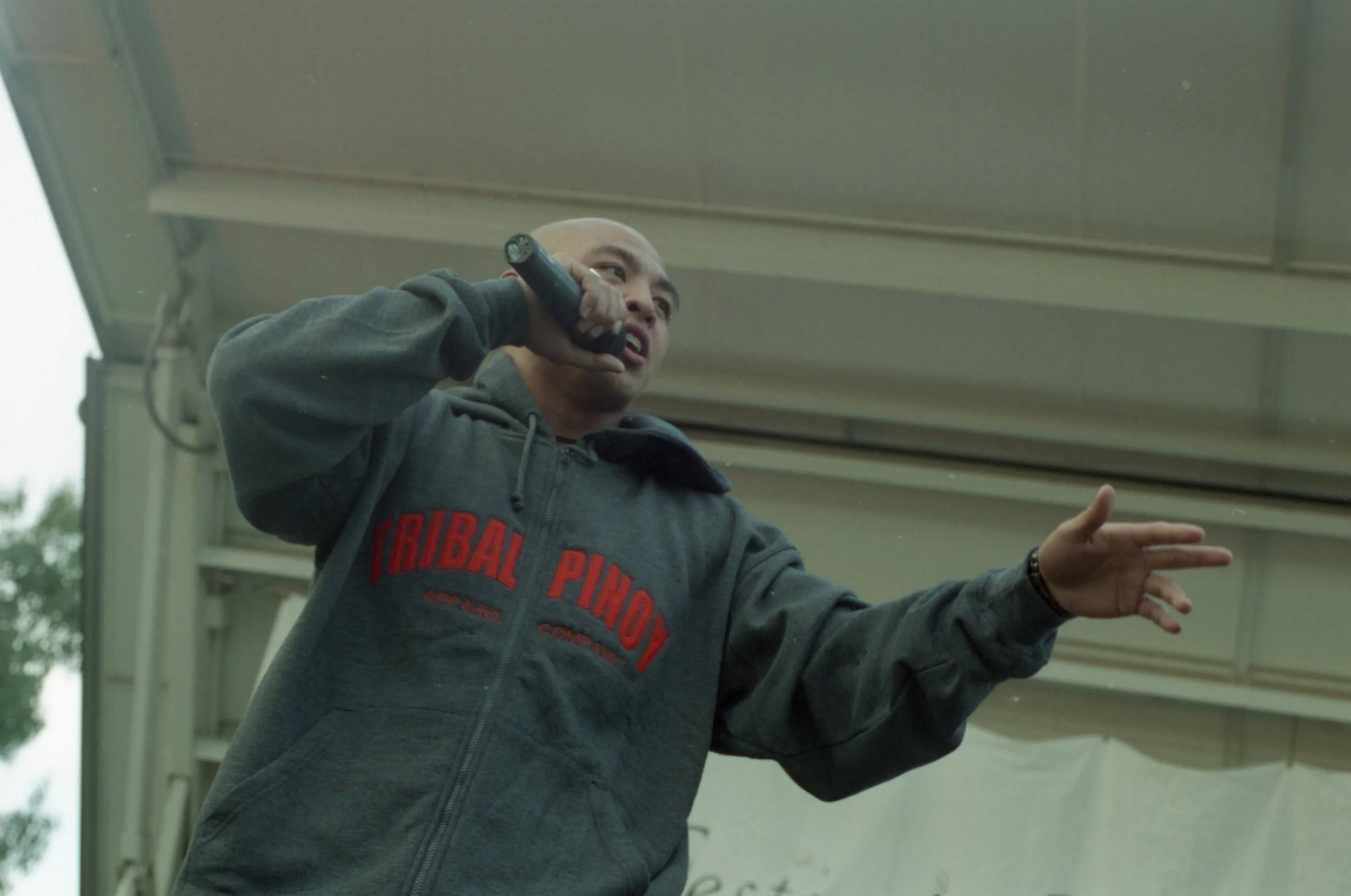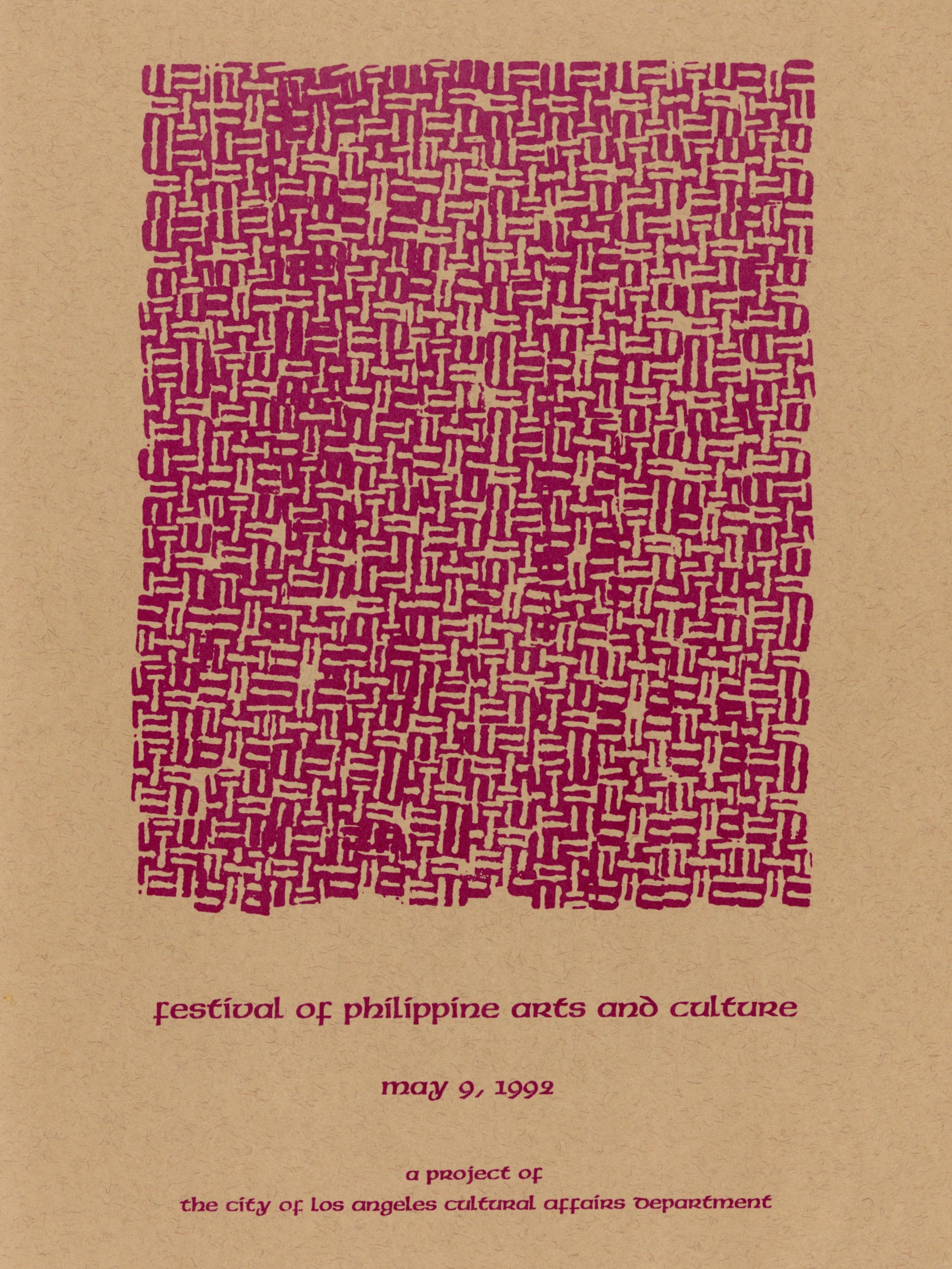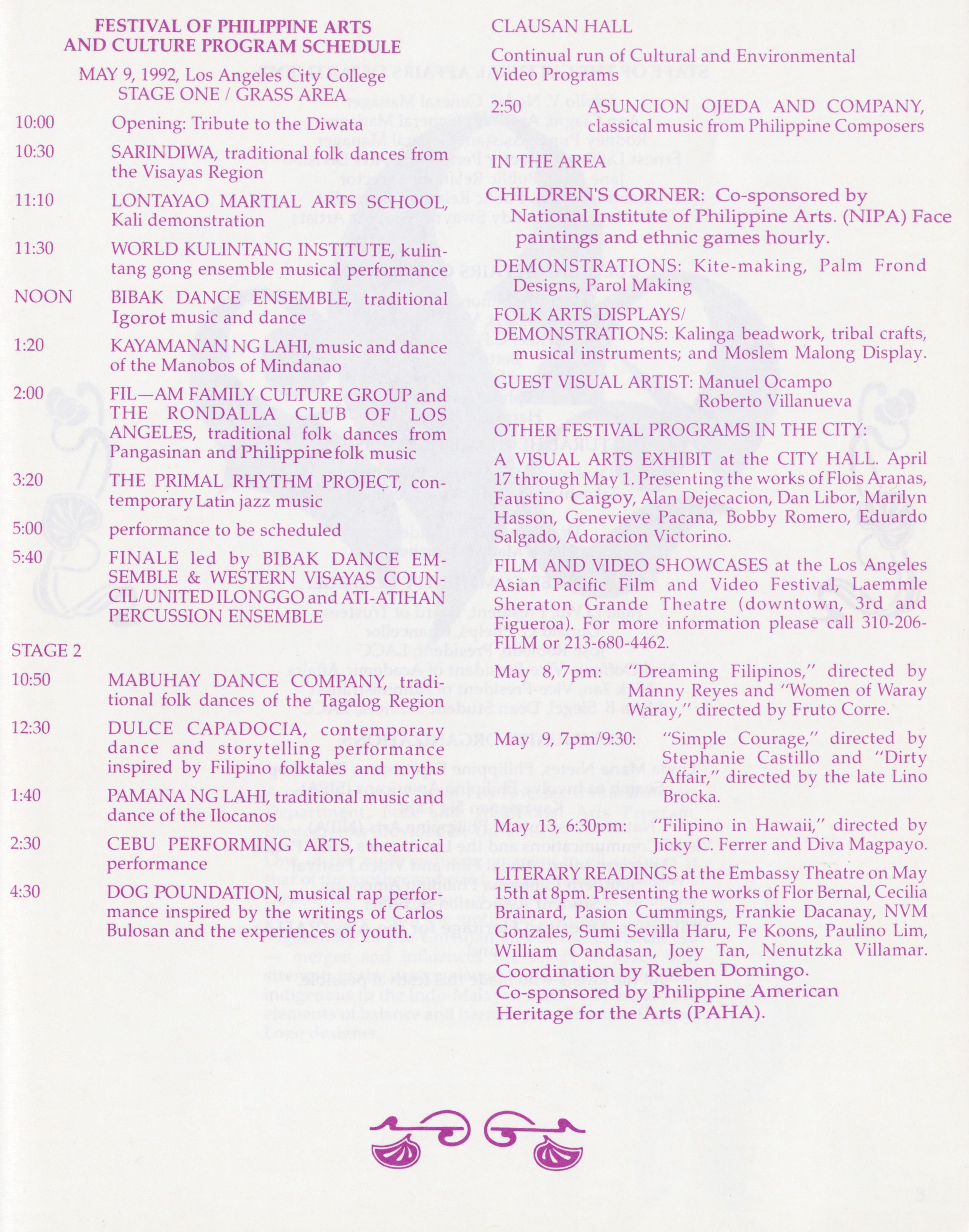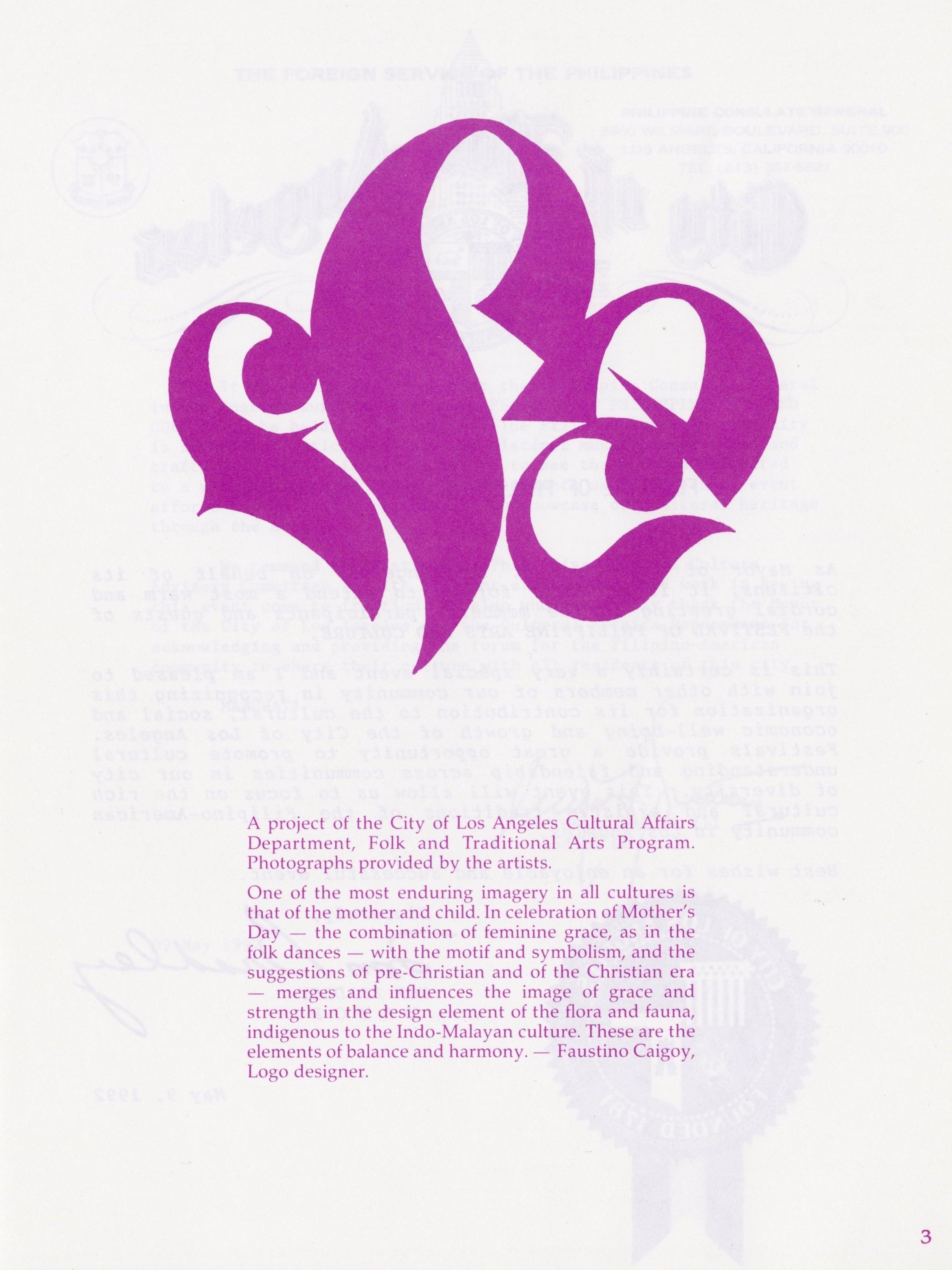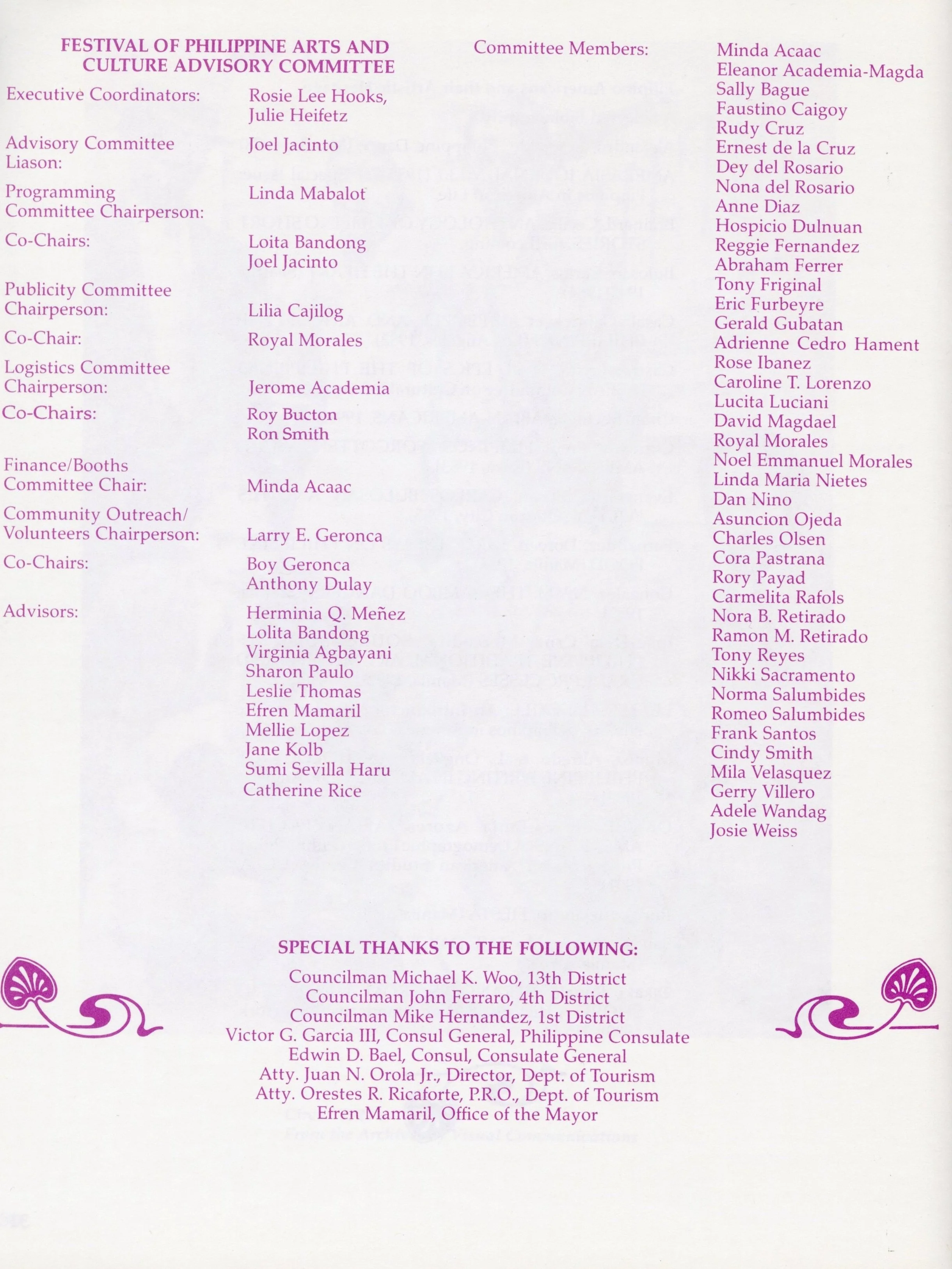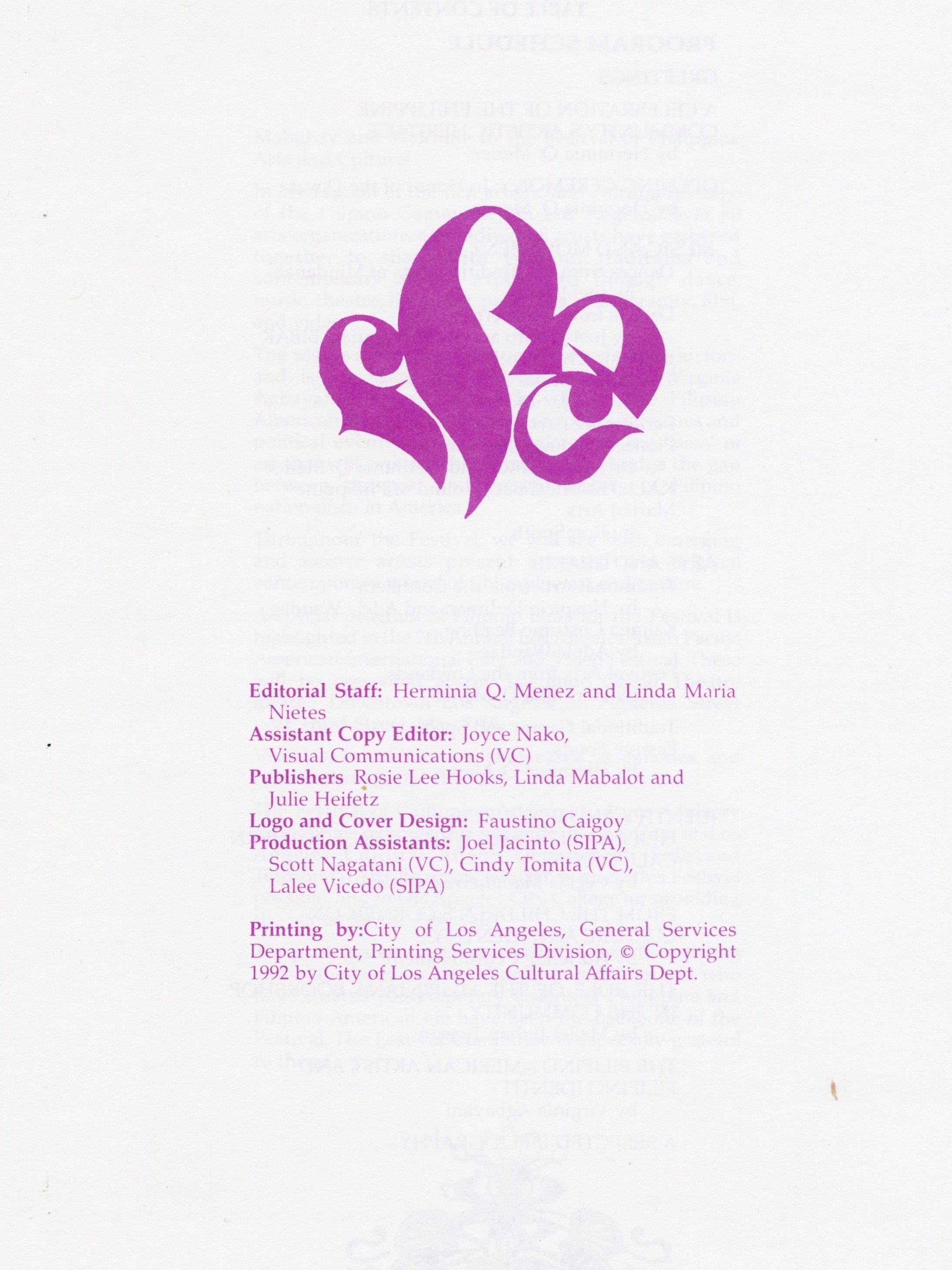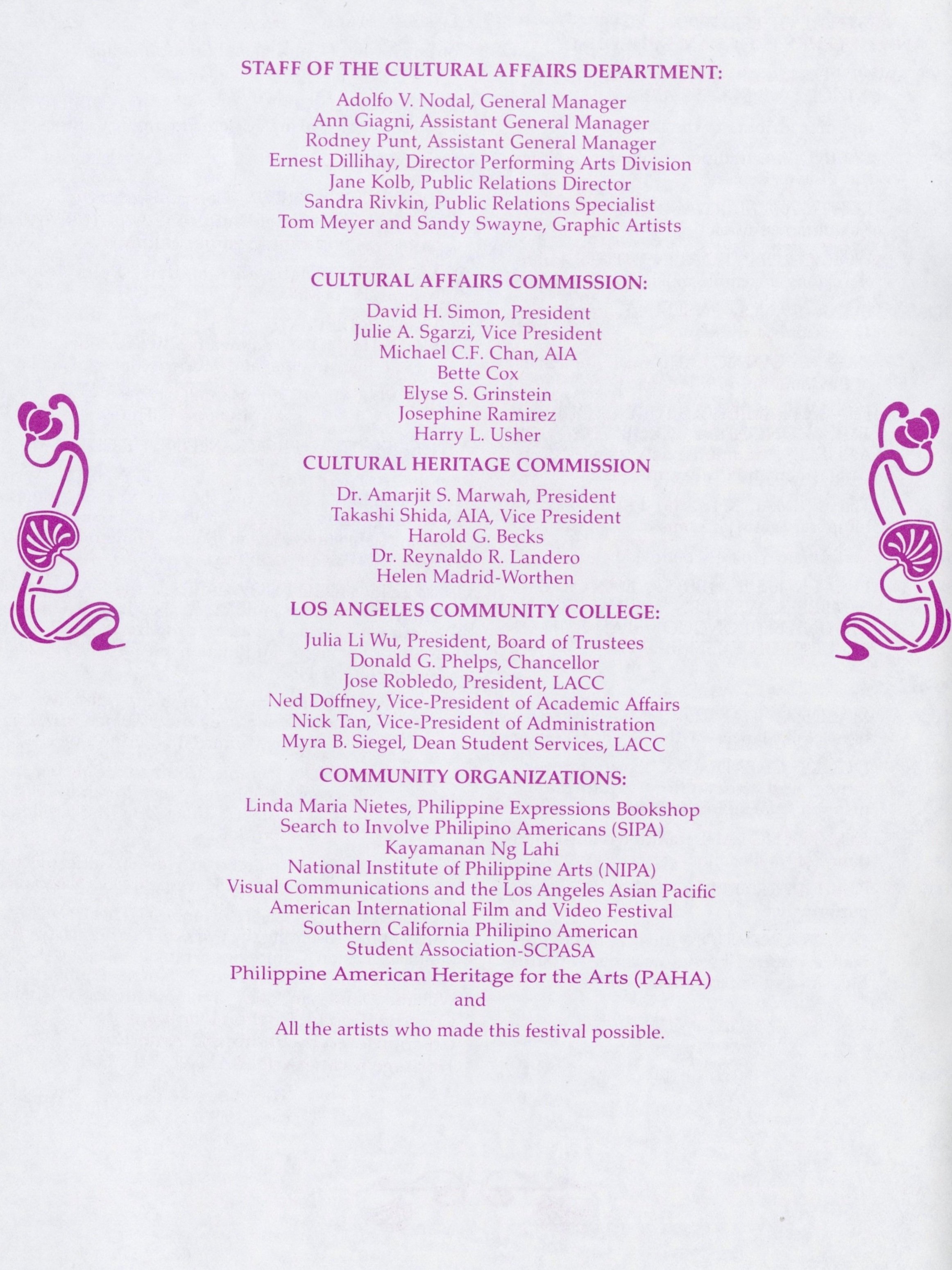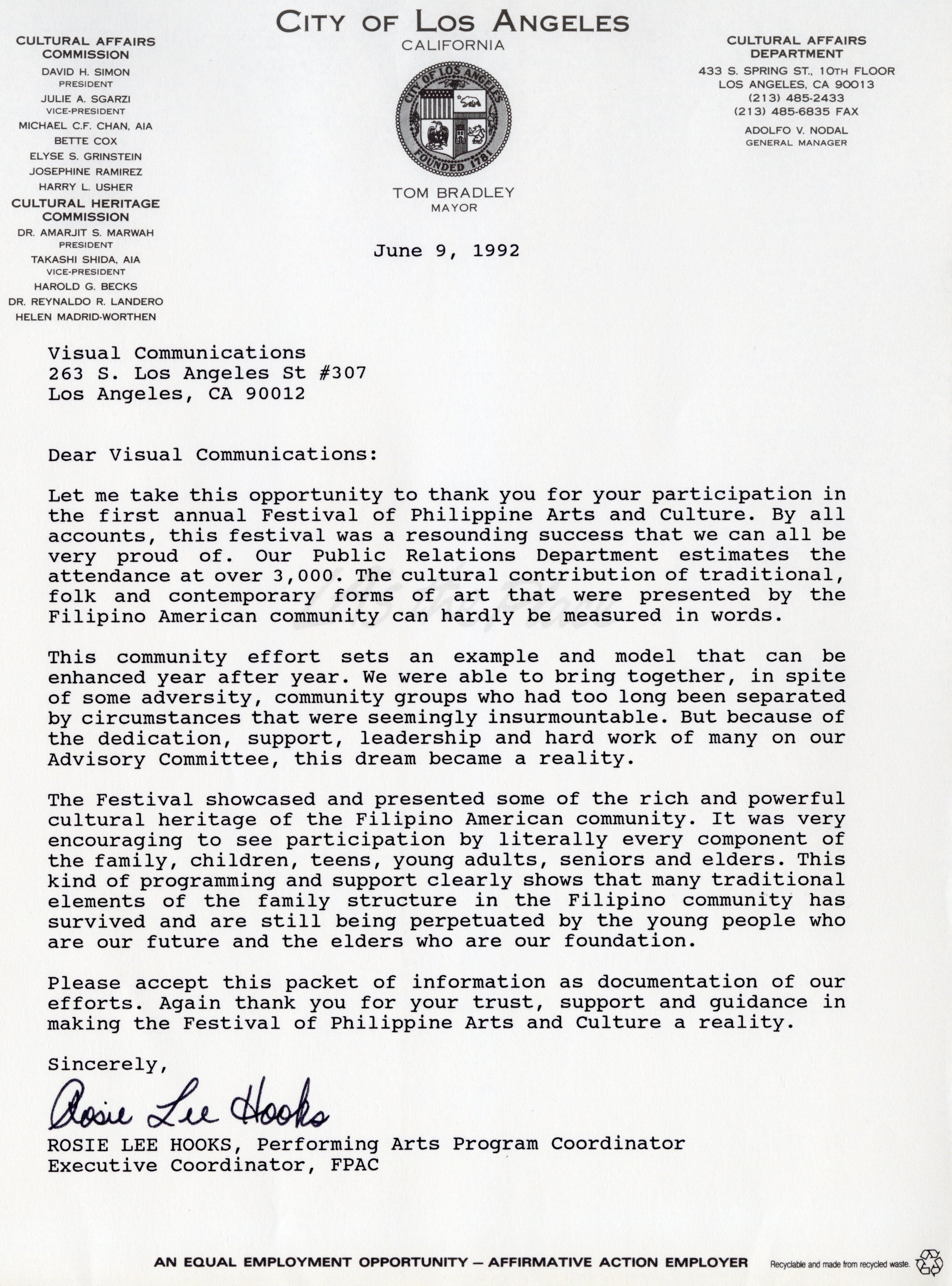Linda’s Legacy: FPAC (Festival of Philippine Arts and Culture)
/Jilly Canizares (Executive Director, FilAm Arts/FPAC) presenting the FPAC Award to Linda Mabalot. (FPAC 2000 at Pt. Fermin)
This weekend Los Angeles will gather for the 29th Edition of FPAC – the beloved Festival of Philippine Arts and Culture. With Linda’s birthday around the corner, we’re pulling out a few gems from the VC Archive that celebrate Linda, and the history of Visual Communications and FPAC/FilAm Arts.
1992 fpac promotional flyer
WHAT IS FPAC?
FPAC is a community celebration of Philippine traditions as well as the contemporary artistic legacies of Filipino/a/x folks living in Los Angeles. FPAC began in 1992 as a project of Los Angeles City’s Cultural Affairs Department. The festival was envisioned as a way to explore, celebrate and share the various traditions, philosophies, and artistic perspectives of the city's Filipino/a/x community. Rosie Lee Hooks, who served as the Executive Coordinator of the first FPAC on behalf of the Cultural Affairs Department, worked with FilAm community leaders to launch the festival.
Rosie Lee Hooks, Winston Emano (FilAm Arts Board Member/LAAPFF Publicist), Kat Carrido-Bonds (FPAC 2000 at Pt. Fermin)
Jilly Canizares (Executive Director, FilAm Arts/FPAC) presenting the FPAC Award to Rosie Lee Hooks. (FPAC 2000 at Pt. Fermin)
Jerome A., Rosie Lee Hooks, Linda (FPAC 2000 at Pt. Fermin)
Linda Mabalot, an artist in her own right, is part of the foundation of FPAC and helped guide the production of the inaugural event with her down-to-earth leadership style and generous love for community-building. Linda brought together various community members to build FPAC. From college professors to cultural dance instructors, from business owners to visual artists; everyone worked together in coalition to launch this first edition of FPAC. This practice of producing together as a community, from the ground up, is the legacy that has kept FPAC going for over 30 years.
Royal Morales (Uncle Roy) making a sipa ball (FPAC 1993 at Los Angeles City College)
Little kids with the Kulintang. (FPAC 1993 at Los Angeles City College)
Larry Geronca helps a guest prepare for the Ati Atihan parade. (FPAC 1993 at Los Angeles City College)
David Magdael and friends (FPAC 1993 at Los Angeles City College)
Janice Tanaka, John Esaki and Amy Kato interview Festival attendees. (FPAC 1993 at Los Angeles City College)
Folks visit the popular Philippine Expressions Booth. (FPAC 1993 at Los Angeles City College)
LINDA’S ROLE IN FPAC
Linda valued impact and inspiration, it is a value that we continue to center at VC. Back then, in the planning of the festival Linda helped create space for artists of various disciplines and perspectives. As she cultivated relationships with artists, she also encouraged them to give to the space – thus strengthening the community of Festival Builders. Through Linda’s leadership, part of Visual Communications’ FPAC contribution centered films from Filipino/a/x artists. A lineup of films were included in 1992 Los Angeles Asian Pacific Film Festival, which was happening at the same time as the FPAC launch. For Linda and the entire team, it was important to present cinematic storytelling as a way to understand Philippine culture.
FPAC POETRY SLAM hosts and winners
ALison De La Cruz (Festival Director, FPAC)
Johneric Concordia (Poet)
Faith Santilla (BC Poet/Poetry Slam host)
WENDELL PASCUAL (POET/VISUAL ARTIST & DESIGNER OF THE FPAC AWARD)
DOCUMENTING THE 1992 LA RIOTS
There was a lot going on for VC and all of Los Angeles during that time: rising tensions because of police brutality and the Rodney King beating, VC’s preparation for the 7th edition of the Los Angeles Asian Pacific Film Festival, and planning for the inaugural Festival of Philippine Arts and Culture. When the city erupted on April 29, 1992, in response to the acquittal of the five LAPD officers who beat Rodney King, the VC staff pivoted to document rebellion. Just days before LAAPFF and FPAC events, Linda recorded interviews with LA residents at 3 locations: Crenshaw Square, the Memorial parade for Eddie Lee, and the Santa Monica Farmers Market. Linda's care for the community and the people’s voices is what we strive to continue in our current work.
LINDA’S LEGACY
Linda led and created, very much like a matriarch or older sister. If something or someone needed help, she understood who was the best fit to help – simply by her practice of listening and being present with her community peers. Realizing that FPAC needed a logo, Linda reached out to her artist family to help. It is no surprise that when she approached Faustino Caigoy for the task, he created a bold logo that held the essence of feminine grace and strength – much like a mother’s embrace. A perfect logo to go with the FPAC launch on that Mother’s Day weekend in 1992, and a tender reflection of Linda’s loving leadership. It’s in her leadership that Visual Communications is intertwined with FPAC’s foundation and legacy. As a way for VC to support Asian American artists, Linda and the VC staff helped curate the live program, and produce the printed program.
That legacy of coalition building continued as the annual festival grew and expanded to Cabrillo Beach in 1994, Pt Fermin Park in 2001, Grand Park in 2014, El Pueblo in 2015, Echo Park in 2016 and now its current home at Levitt Pavillion. Learn more about the 29th Edition of FPAC here.

